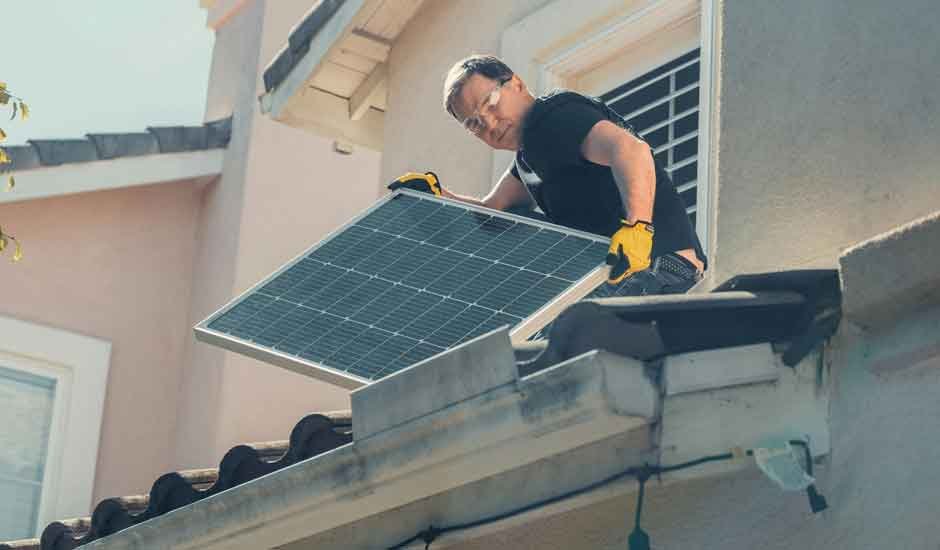Making the switch to renewable energy for your home is a significant step towards reducing your carbon footprint, lowering energy costs, and promoting environmental sustainability. Renewable energy sources such as solar, wind, and hydroelectric power offer clean, sustainable alternatives to fossil fuels, providing homeowners with an opportunity to generate their clean energy and contribute to a greener future. This article offers practical tips and guidance on how to make the transition to renewable energy for your home, empowering homeowners to embrace clean energy solutions and reduce their reliance on traditional grid electricity.
1. Assess Your Home’s Energy Needs and Potential
Before making the switch to renewable energy for your home, it’s crucial to assess your home’s energy needs and potential. This evaluation involves considering factors such as your household’s energy consumption patterns, available roof space for solar panels, and local climate conditions. Additionally, understanding active solar energy and how it can benefit your home is essential. You may be wondering, “What is active solar energy?”. Active solar energy systems use solar panels to convert sunlight into electricity, providing a sustainable and cost-effective source of power. By conducting a thorough assessment of your home’s energy requirements and the potential for active solar energy implementation, you can make informed decisions about transitioning to renewable energy sources. This proactive approach ensures that your renewable energy system meets your specific needs while minimizing environmental impact.
2. Explore Renewable Energy Options and Technologies
Once you’ve assessed your home’s energy needs and potential, explore the various renewable energy options and technologies available to determine the best fit for your property. Solar energy systems, including solar panels and solar water heaters, are popular choices for homeowners looking to harness the power of the sun to generate electricity and heat water for their homes. Wind turbines, small-scale hydroelectric systems, and geothermal heat pumps are also viable options for homeowners seeking alternative renewable energy sources. Research different renewable energy technologies, their costs, benefits, and installation requirements to make an informed decision that meets your energy needs and budget.
3. Evaluate Financing and Incentive Programs
Transitioning to renewable energy can require upfront investment, but there are various financing options and incentive programs available to make renewable energy more accessible and affordable for homeowners. Explore financing options such as solar loans, leases, and power purchase agreements (PPAs) to help offset the initial cost of renewable energy system installation. Additionally, federal and state tax credits, rebates, grants, and incentives can significantly reduce the cost of renewable energy projects and accelerate the payback period of your investment. Research available financing and incentive programs in your area and take advantage of opportunities to maximize your savings and return on investment when transitioning to renewable energy for your home.
4. Work with Qualified Professionals and Installers
When making the switch to renewable energy for your home, it’s crucial to work with qualified professionals and installers who have experience and expertise in designing, installing, and maintaining renewable energy systems. Seek out reputable renewable energy companies, contractors, and installers with proper licensing, certifications, and industry accreditation to ensure the quality and reliability of your renewable energy installation. Request multiple quotes, conduct background checks, and ask for references from past customers to verify the credibility and track record of potential service providers. Collaborate closely with qualified professionals throughout the design, installation, and commissioning process to ensure that your renewable energy system meets safety standards, building codes, and performance expectations.
5. Monitor Performance and Optimize Efficiency
Once your renewable energy system is installed and operational, it’s essential to monitor its performance regularly and optimize efficiency to maximize energy savings and environmental benefits. Implement energy monitoring tools, smart meters, or online monitoring platforms to track your renewable energy system’s performance, energy production, and consumption in real time. Analyze performance data, identify trends, and adjust system settings or behaviors to optimize energy usage and maximize savings. Additionally, conduct routine maintenance, inspections, and repairs to ensure the continued reliability and efficiency of your renewable energy system over time. By monitoring performance and optimizing efficiency, homeowners can maximize the benefits of their renewable energy investment and enjoy clean, sustainable energy for years to come.
Conclusion
In conclusion, transitioning to renewable energy for your home offers numerous benefits, including reduced carbon emissions, lower energy costs, and increased energy independence. By assessing your home’s energy needs and potential, exploring renewable energy options and technologies, evaluating financing and incentive programs, working with qualified professionals, and monitoring performance and optimizing efficiency, homeowners can make a successful transition to clean, sustainable energy solutions. Embracing renewable energy is not only a smart financial investment but also a significant contribution to environmental sustainability and a greener future for generations to come. With the right knowledge, resources, and support, homeowners can take meaningful steps towards reducing their carbon footprint and embracing renewable energy for their homes.






